Inspiration from the sketchbook of concept artist Alida Pintus
The Italian artist discusses her influences and how her work has evolved.
Alida Pintus is an Italian freelance concept artist and character designer. She studied art in several schools in Italy, including Mimaster in Milan and the IDEA Academy in Rome, and then sharpened her skills abroad at the Quentin Blake Center in London and Anomalia Art Labs in the Czech Republic. She says her work is strongly inspired by all these different places she has been to and the people she has met along the way.
Today she works in both traditional materials and in Procreate on one of the best iPads for drawing. We caught up with her to get a glimpse inside her sketchbook and learn more about her work.
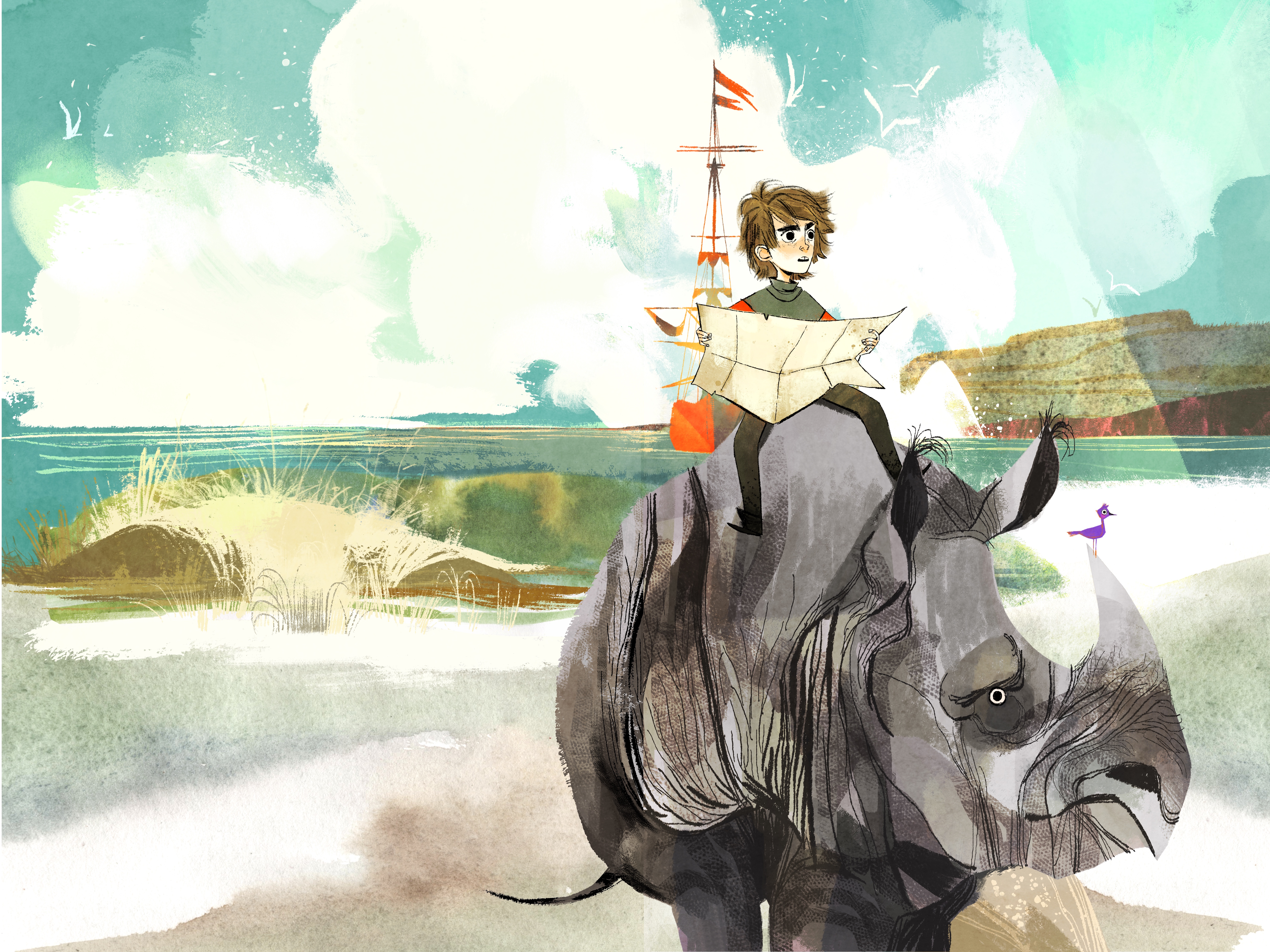
"When I was a child I used to spend a lot of time alone, I had the privilege of being so bored," Alida recalls smiling. "To fill that gap, I became interested in books, particularly old illustrated fairy tales. I thought: When I grow up, I'd love to draw my own characters and stories! But honestly, I didn't know what it was like to be an illustrator, let alone a concept artist."
She adds: "Today, I find myself illustrating very different books and projects: from the friendship story between a child and a rhinoceros in 16th-century Liguria to a gothic children's series curated by Edizioni Piuma."

Alida says she started drawing consistently in a sketchbook during her freshman year of high school. "Everyone had a sketchbook and shared their work on Instagram, so I started doing the same," she recalls. "Thanks to social media, I discovered even more artists sharing their Moleskine flip-throughs. Their sketches looked so appealing to me! From that moment on, I started carrying an A6 sketchbook and a black ballpoint pen with me everywhere."
"I used the techniques they taught us in school, and honestly I was not always satisfied with my drawings. Actually I would always stop after completing half of the sketchbook and then start a new one."
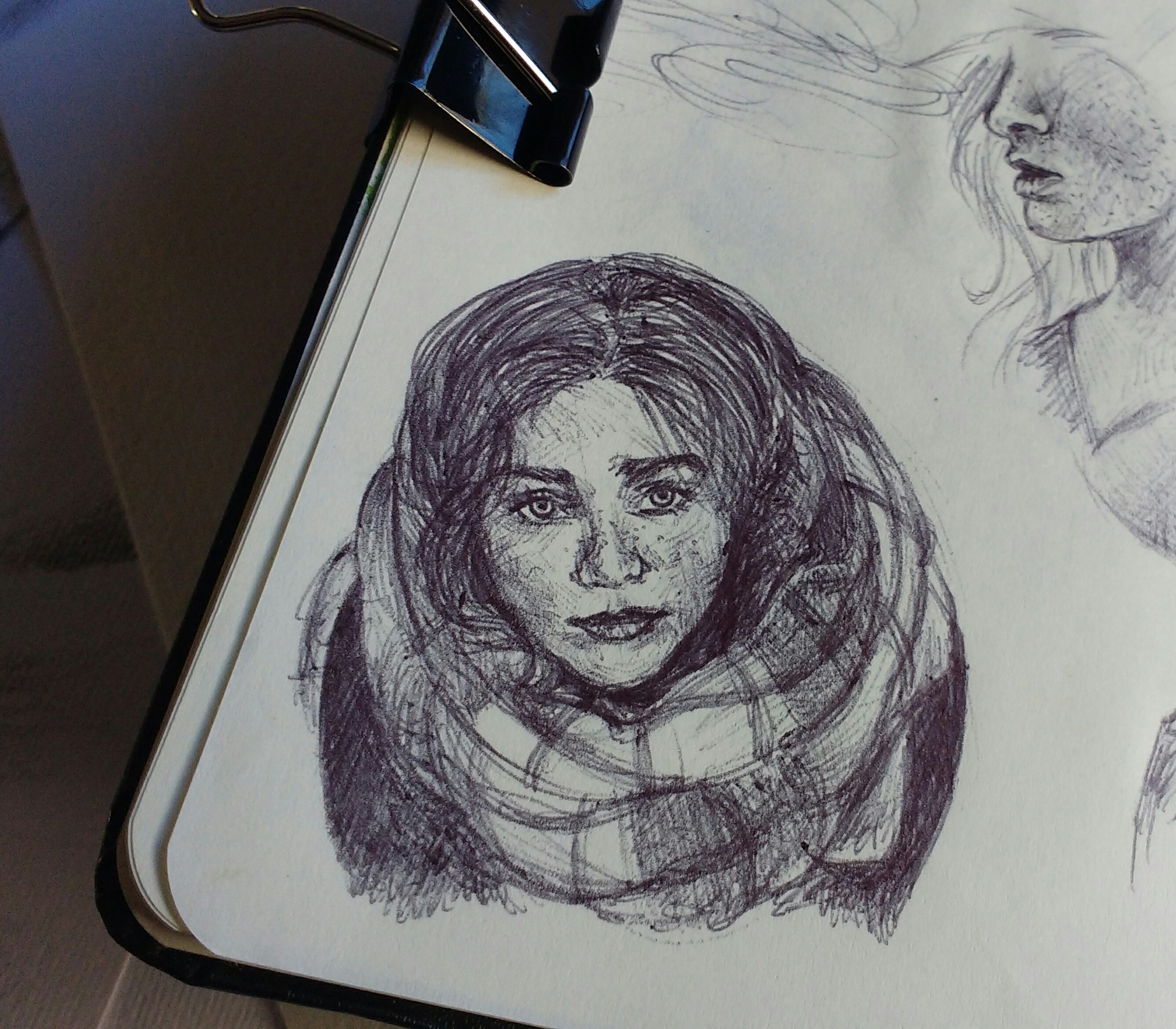
Alida says she that like many of her peers, she was a fan of Loish at that time. "I copied her way of stylizing characters. But I also admired cartoonists like Cyril Pedrosa and Ken Niimura, and all the behind-the-scenes content from big studios like Pixar and Dreamworks," she says.
Daily design news, reviews, how-tos and more, as picked by the editors.
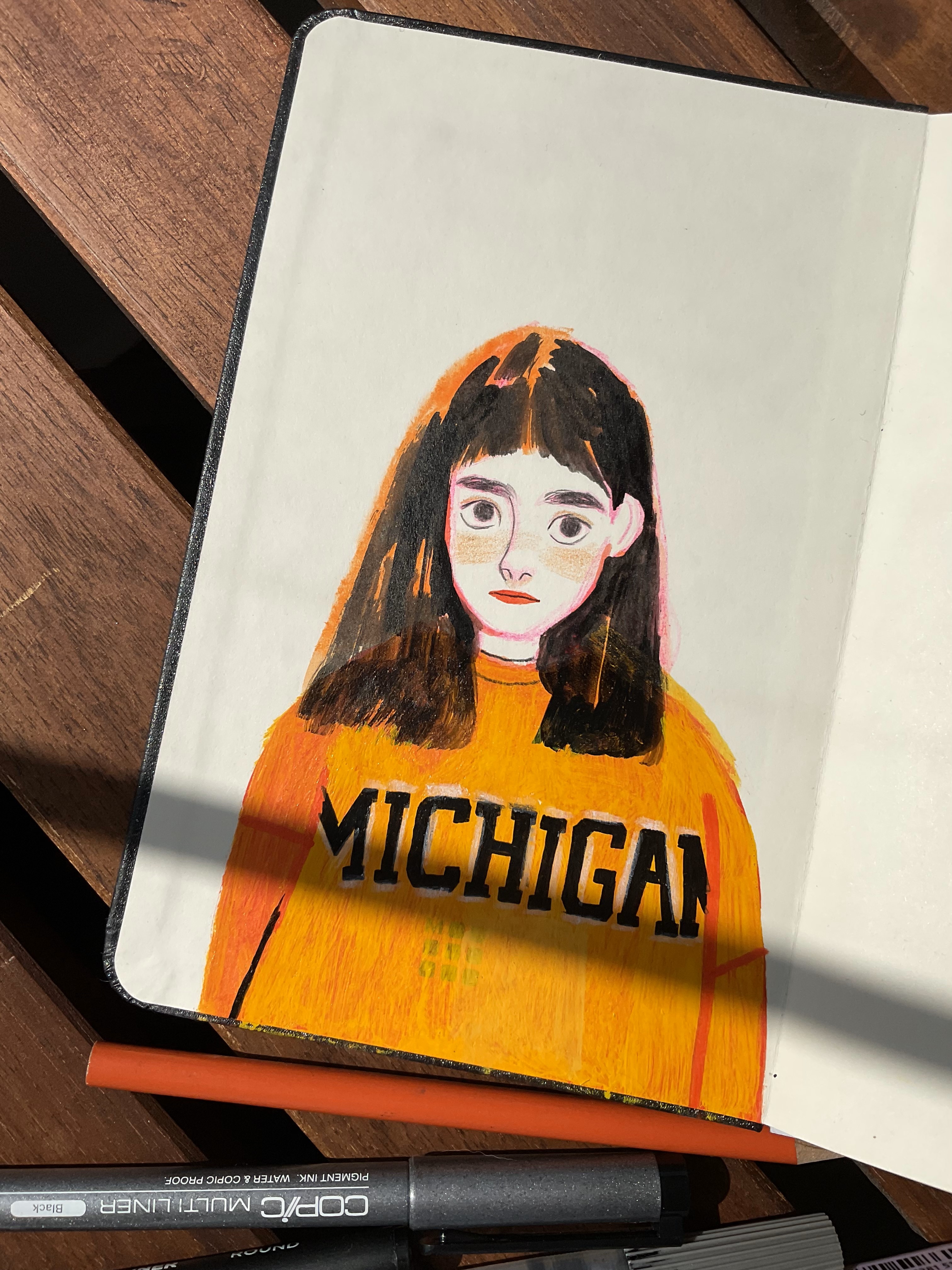
"Then I got into children's illustrations. I realized that I always preferred the colour stage to the drawing stage. So I started experimenting with collage and texture and being more spontaneous with my brushstrokes. I was fascinated by the work of Gek Tessaro, Narges Mohammadi, Laura Carlin, Suzy Lee and Isabelle Arsenault."

I'm curious how much Alida's approach has changed from the first sketchbooks to the latest ones. "In the beginning I used the sketchbook more as a proof of being an artist. Something I could show to people who wanted to see my work. That generated a lot of pressure and insecurity. You could see it in my drawings, they were small and took up every inch of the page," she says.
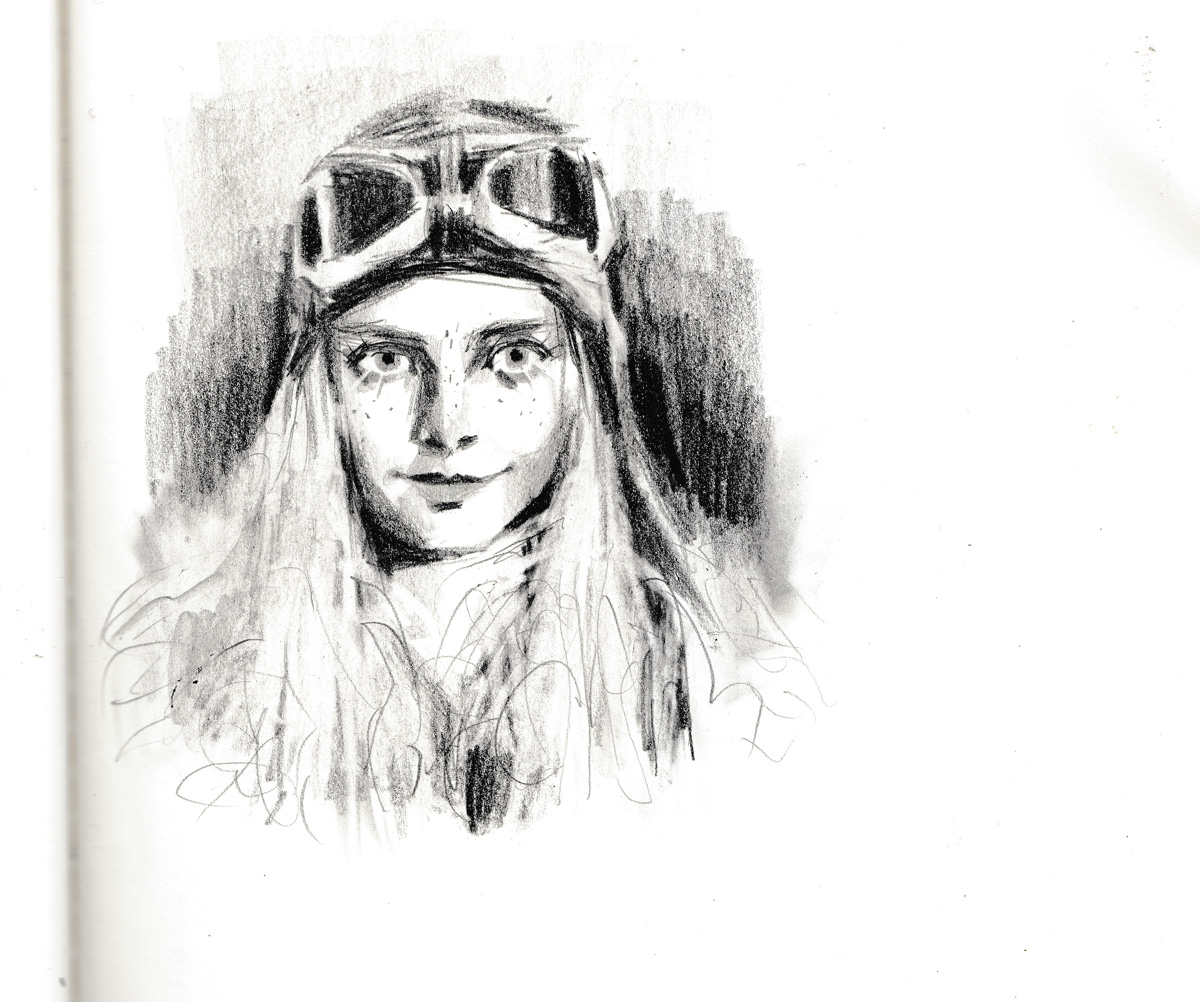
"Now I don't think about showing my sketchbook to anyone. I can do what I feel: I can stay in my comfort zone or experiment with new techniques. I can also be disappointed with the result and have bad pages. That's okay," she continues. "Lately I've been trying to draw outdoors. Instead of just taking pictures, I also take visual notes of the places I see."
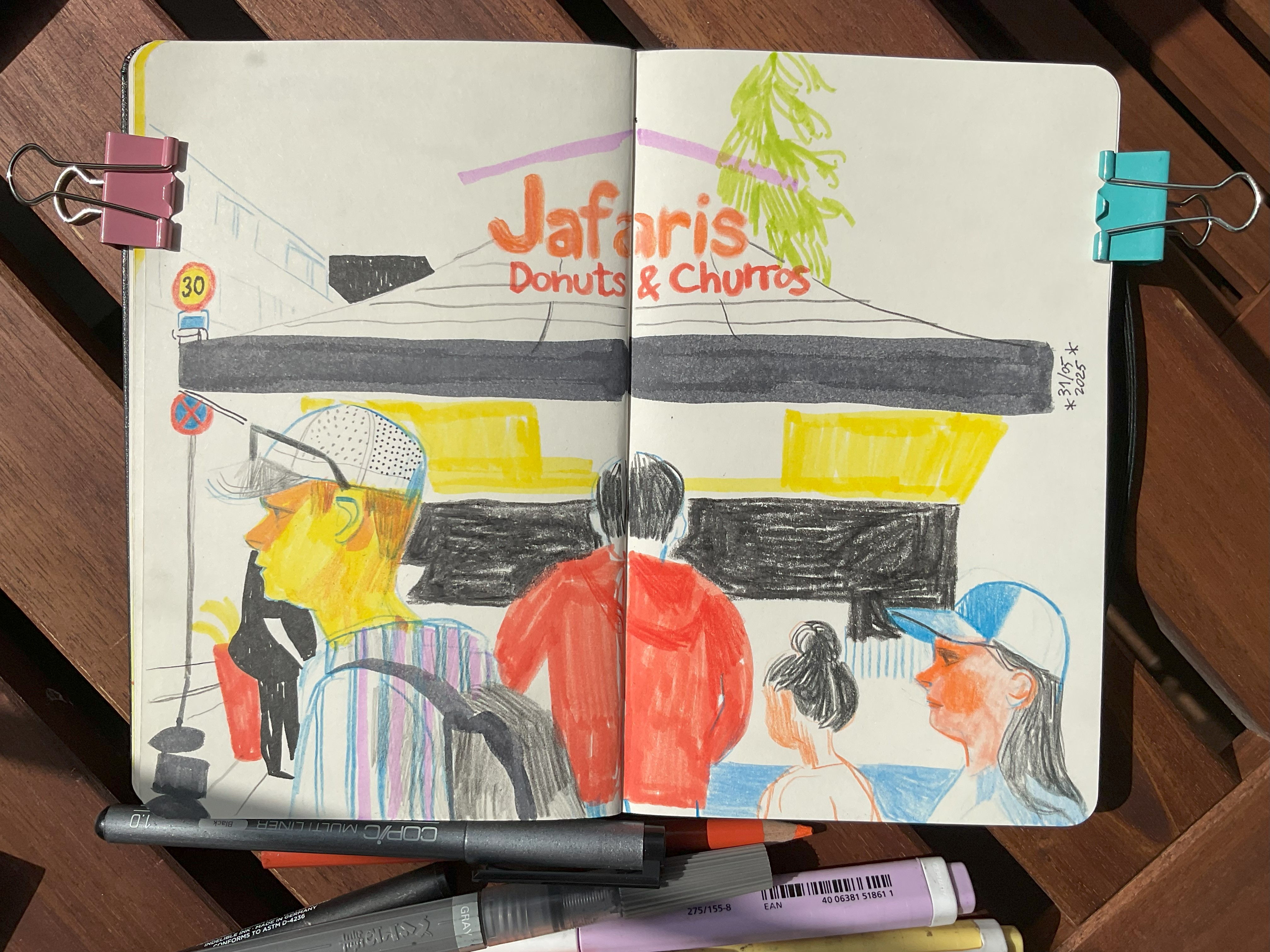
Speaking of approach, Alida has some advice for young artists who struggle wanting to create super-curated pages and end up not drawing at all. "Always try to remember that on social media you only see what people want to show," she says. "Everyone wants to look good enough. But no one creates only masterpieces," she says.
"We always tend to hate mistakes, but in art there are no mistakes, only happy accidents, to quote Bob Ross. When the blank page intimidates you, try gluing a piece of coloured paper or making some ink stains and start drawing from there."
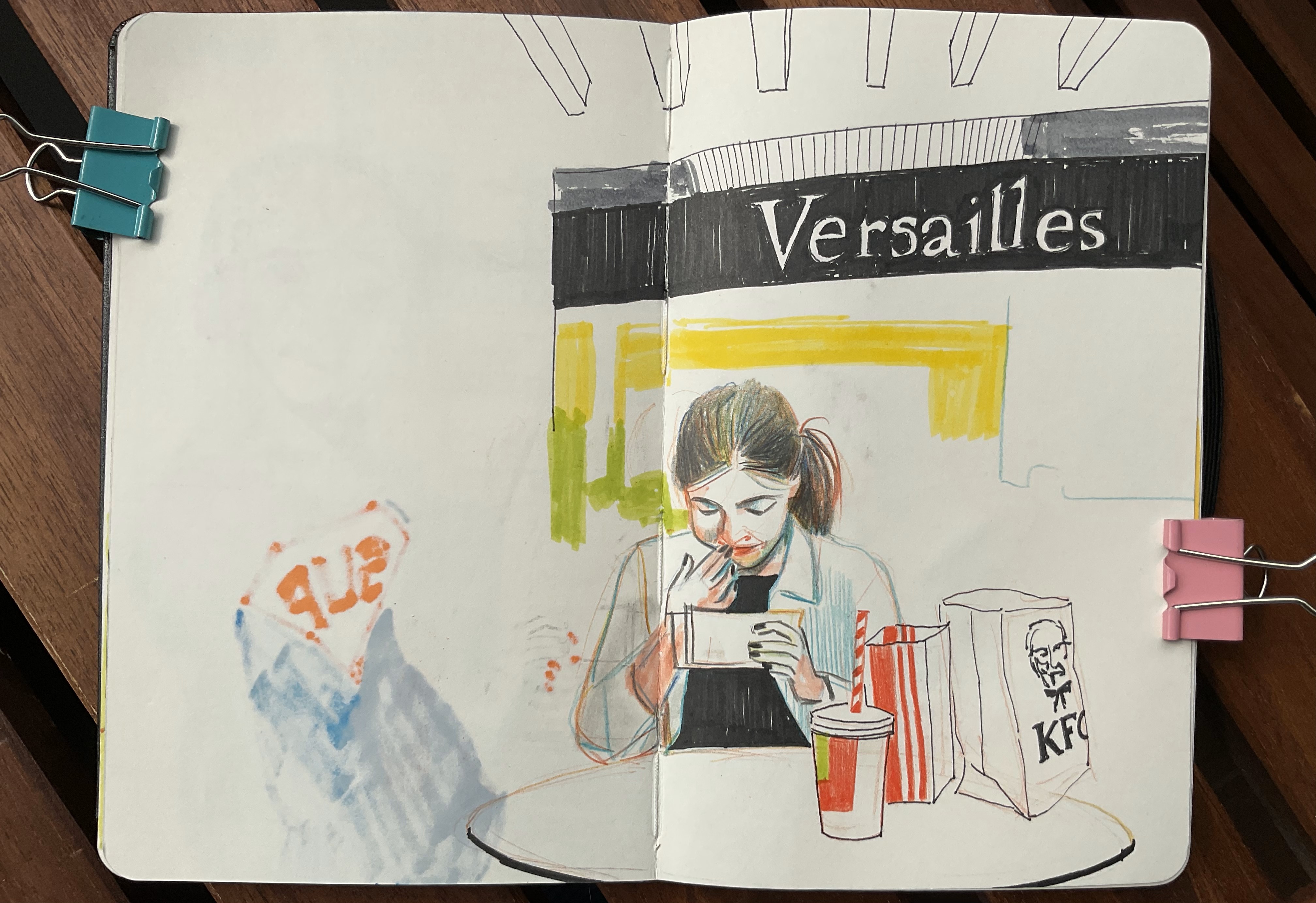
As you can see on Alida's Instagram, she participates in many challenges such as Inktober and Birbfest. I asked her how she managed to draw every day and what benefits she has noticed. "It wasn't always as easy as it may seem," Alida says.
"The first time I did Inktober, I stopped after the first prompt. I didn't feel good enough to draw something beautiful for every single theme. The second year I decided to make my own list. Being very passionate about folklore, I chose a Grimm's fairy tale for each day. I had so much fun and completed the challenge!" she adds.
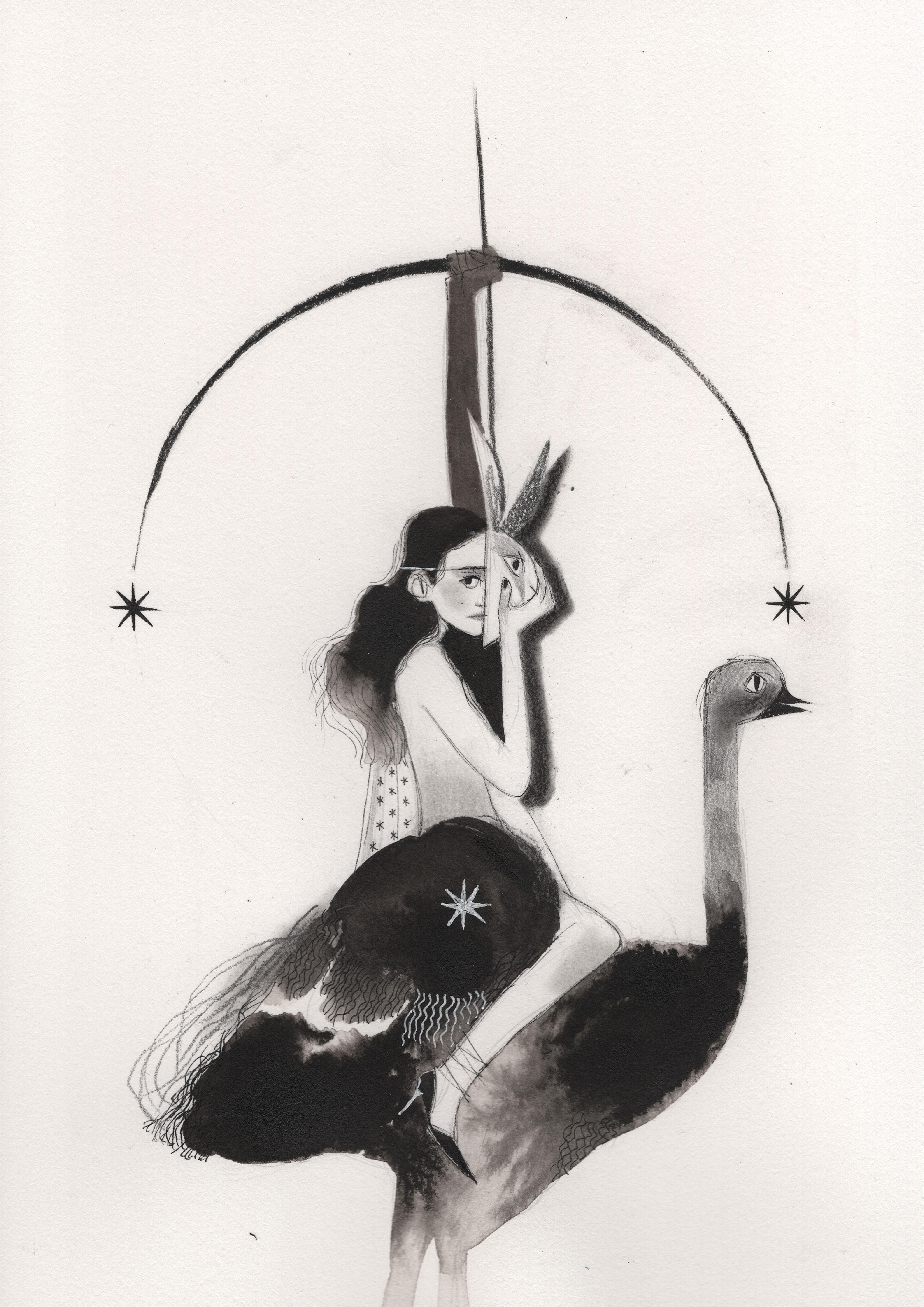
"Looking back, I don't like any of the drawings I did during the challenge. But they helped me work faster and feel more confident when it comes to composition and character design.
"For me, these challenges are a stimulus for when I feel stuck. You don't have to complete them to feel satisfied. Take them as an opportunity to spend some time on your personal art and experiment with new techniques and styles instead," Alida suggests.
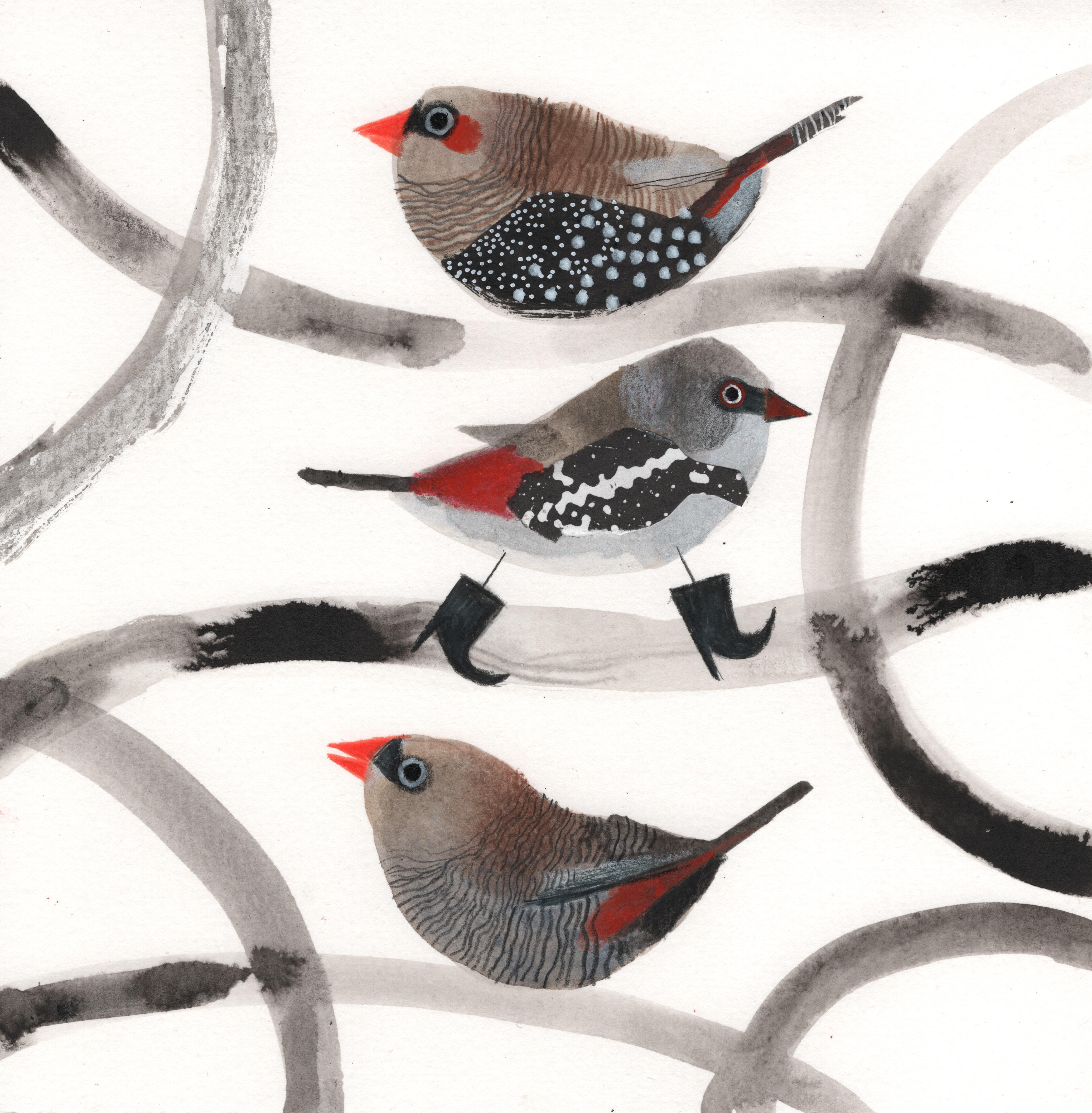
I ask Alida what are her favourite sketchbook pages so far. "Ironically, the ones that I didn't like at first glance, that I've left unfinished and picked up at a later time," she says smiling.
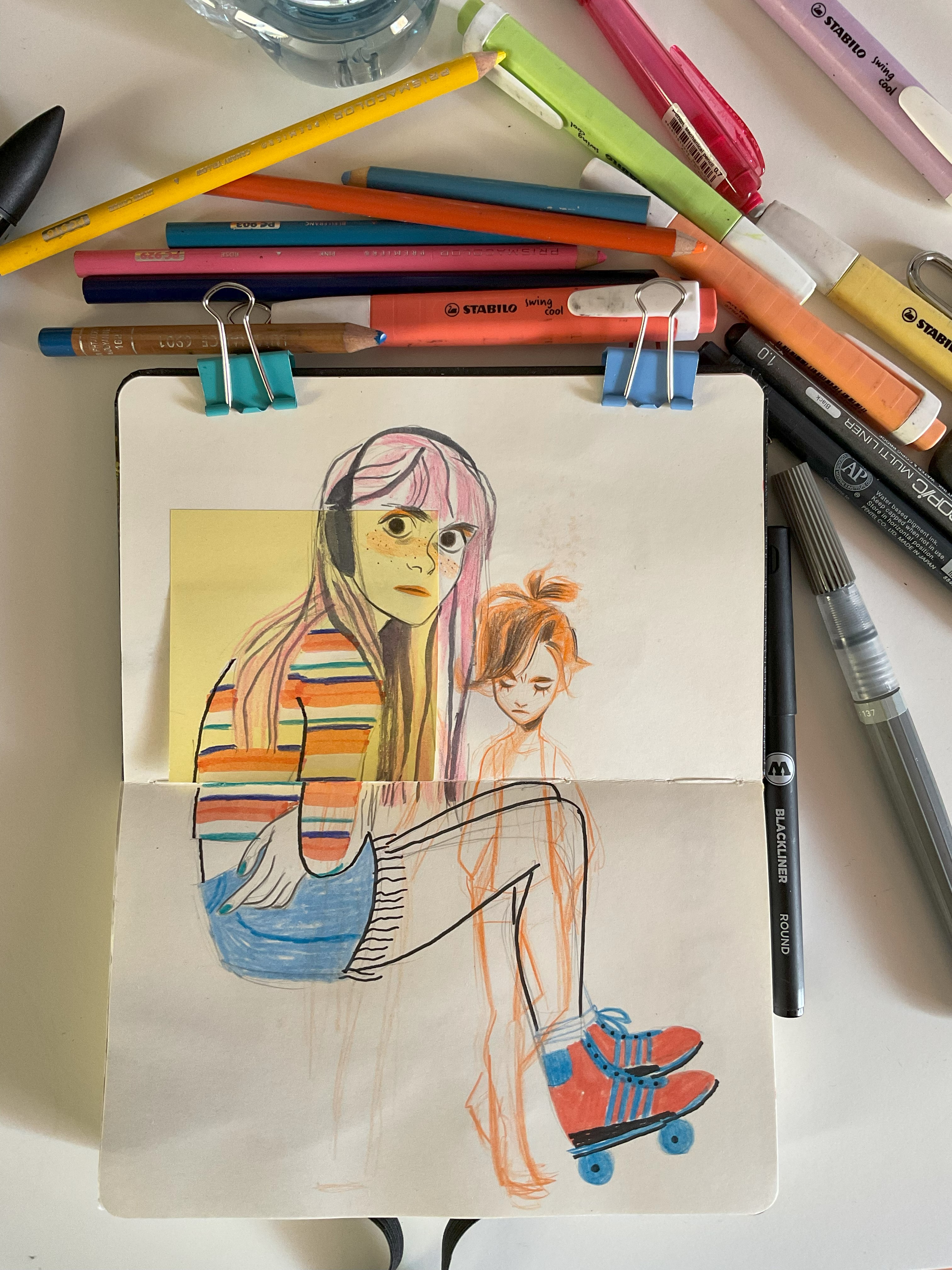
"I also really like the ones where I pasted some notes or some receipts because they remind me of a place I've been that I liked," she adds.
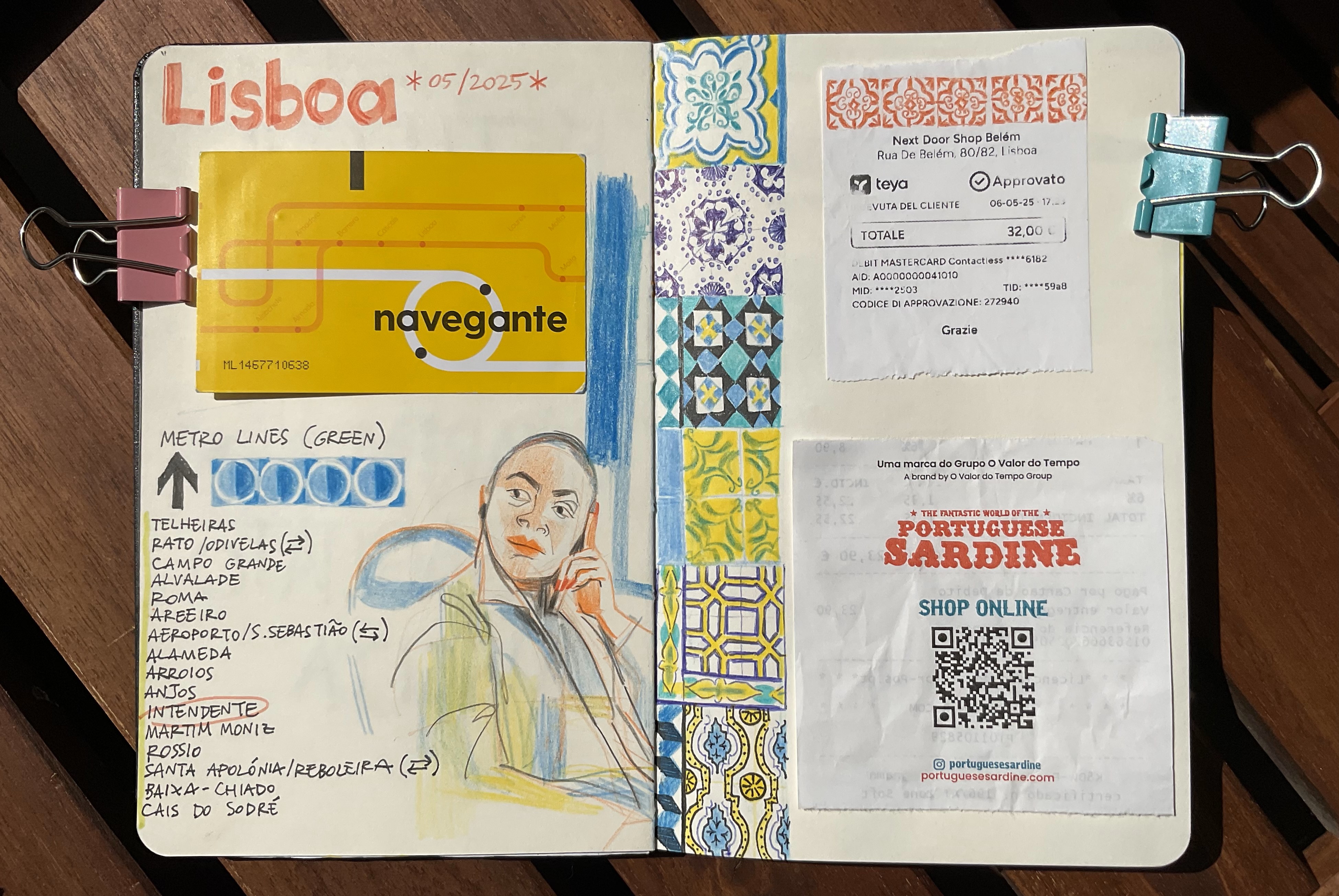
What about her favourite tools for quick sketching? "In my bag there's always a 12b pencil, an ink-filled brush pen, markers that I use to quickly draw the silhouette of my subjects and coloured pencils (lately I prefer orange, blue and rainbow ones)," says Alida. "I also carry a glue stick and cut-outs from magazines or leftover papers with textures I created for other work."

"When I'm at home, I prefer to use calligraphy inks because they create nice effects on wet paper. I actually use a little bit of everything, from wax crayons to oil paints."
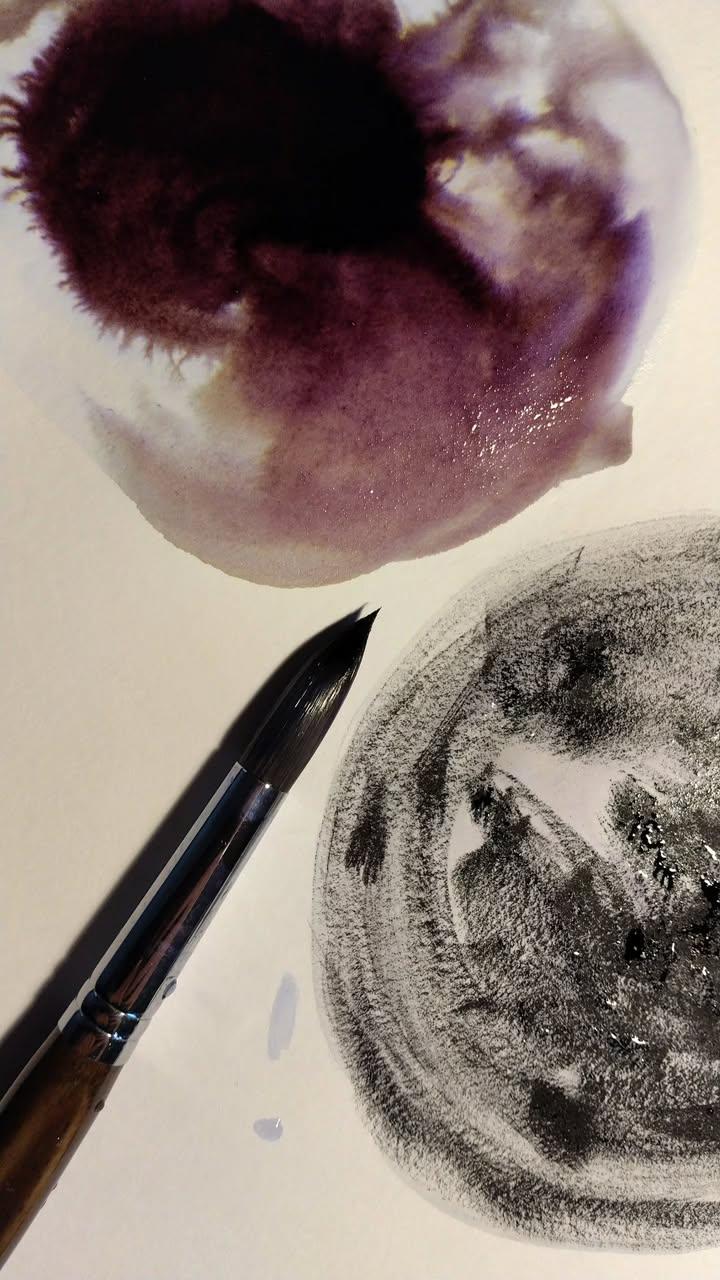
How does she combine traditional with digital tools? "I started using digital tools later on, but I know I can't do without them now. It's very practical when I move from one city to another. I just put my iPad in my suitcase and I can work on Procreate everywhere," Alida says.
"But I must admit that I enjoy it more when I use traditional tools. Also, some textures are easier and faster to make on paper. So I usually prepare backgrounds on paper, scan them and incorporate them into my digital illustrations. This adds more warmth and personality to my digital work."
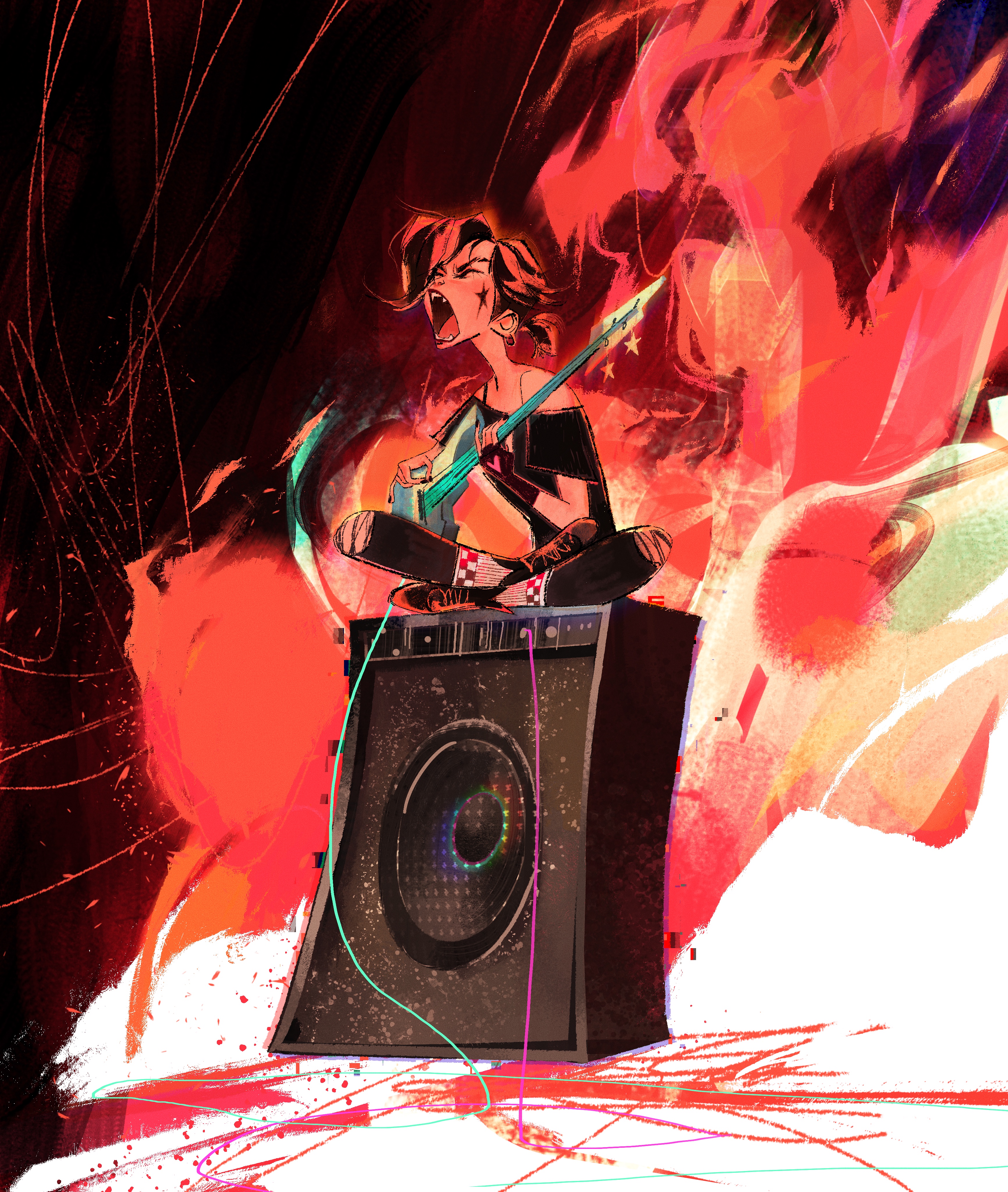
What do you think are the benefits of traditional drawing that you wouldn't otherwise get from working only digitally? "Oh, I think there are many!," Alida answers. "First of all, the fact that you can feel the consistency of the tools you are using and you can grasp the difference between holding a pencil and a wax crayon.
"Then the fact that you can't use ctrl z. You have to deal with that wrong spot or line. That stimulates you and trains you to deal with mistakes and transform them or work around them. Maybe that's a little bit too emotional, but I think some sensitivity is always needed when it comes to drawing," she adds.

I ask Alida how to find motivation on bad days. "I don't rely on motivation," Alida replies. "I believe in getting used to doing something every day, accepting that there will be more productive days and days when that something is just sharpening a pencil.
"I usually rely on my curiosity. I like to go around places and draw everything that catches my eye. I like to observe people and catch potential characters and stories everywhere. Why did that man choose that outfit, how long has that old lady had that dog, why is that woman in a hurry? I always try to ask myself these questions when I have to draw a character from scratch. My advice is to never stop being curious!"

Ending our conversation, I ask Alida about her future goals regarding her personal art. "Lately I've been enjoying nature illustrations a lot: I would love to make a nonfiction book about foxes, my favourite animals.
"I would also like to get better at backgrounds and try to draw more objects, applying the same rules as for characters. And eventually I aim to draw and illustrate my own stories. Actually I've been working on a few pitches this year that I hope will come to fruition!"
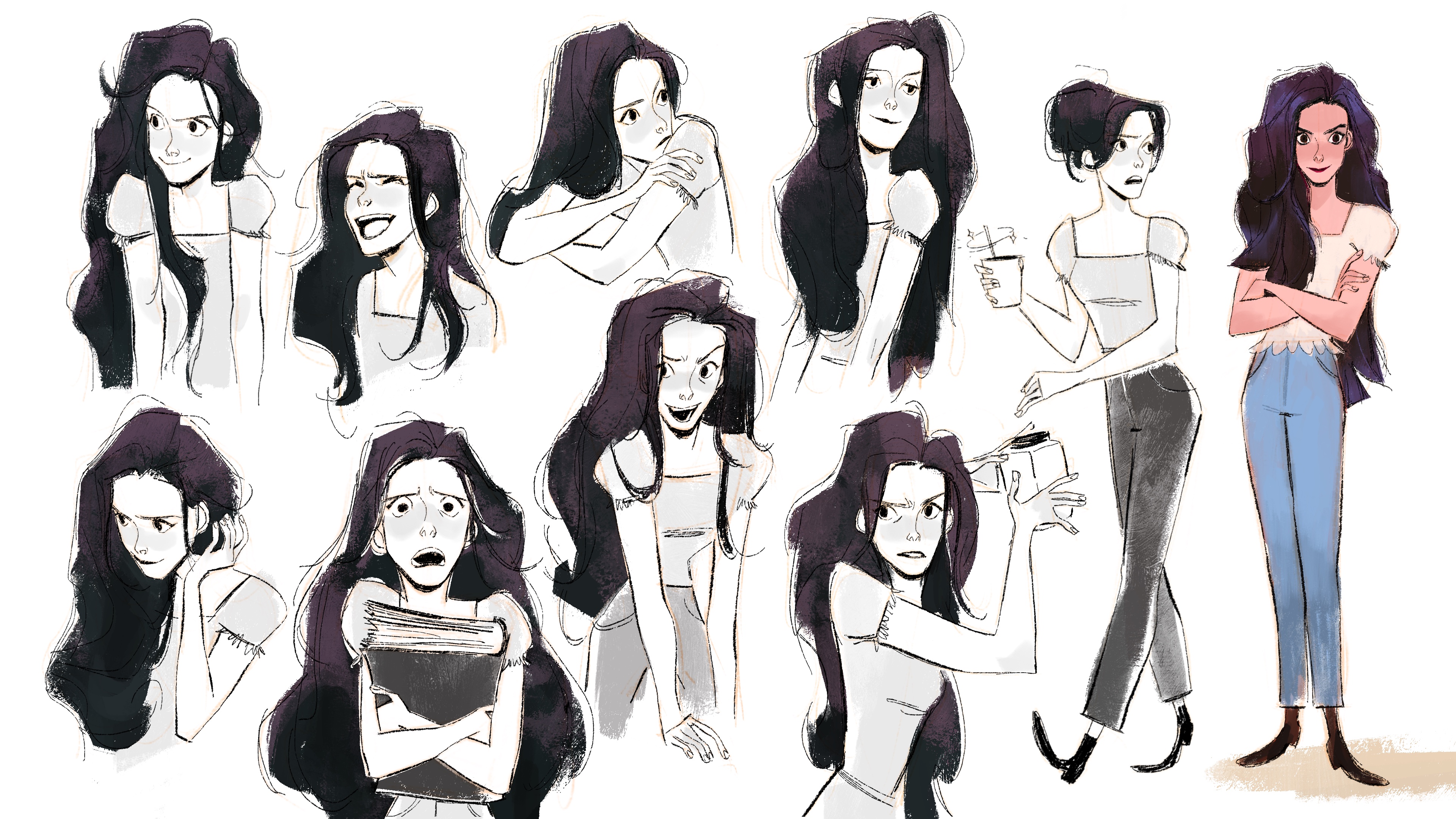

If you're inspired, see our roundup of Procreate tutorials and our guide to the best drawing apps for iPad. For more ideas for technique, see our recent piece by an artist on how he does figure drawing on an iPad.

I'm Madalina Buzenchi (aka madalinartz), an illustrator based in Italy. She is picture book passionate. As a self-taught artist, talking to other artists in the field and listening to their journey and advice has played a crucial role in shaping my path and art skills.
You must confirm your public display name before commenting
Please logout and then login again, you will then be prompted to enter your display name.
